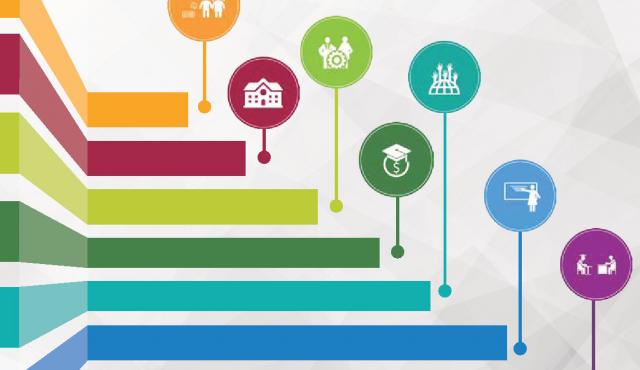By Silvia Montoya, Director of the UNESCO Institute for Statistics, and Dankert Vedeler, Co-Chair of the SDG Education 2030 Steering Committee

Can the pursuit of the Sustainable Development Goals (SDGs) really change the world for the better in just 15 years? One thing’s for sure: we’ll never know without good data. SDG 4 – Education 2030 – is so ambitious that we will need more and better data to monitor progress, identify bottlenecks and, above all, sharpen policies and ensure that every dollar invested in education makes a tangible difference in people’s lives.
As things stand, the world as a whole gathers only about half of the data needed to monitor progress towards the global education targets. Data availability falls even further in terms of disaggregated data which are needed to monitor and ensure that everyone – no matter what conditions they face – counts in the efforts to achieve each target.
We also need different types of information, especially in the area of learning outcomes. There is a growing number of national assessments globally, as shown in our Learning Assessment Capacity Index (LACI). Yet to make the most of these different initiatives, we must work together and lay the foundations to produce reliable and internationally-comparable data through the Global Alliance to Monitor Learning (GAML).
Overall, countries need practical skills on how to gather and use new sources of information, methodologies and data to monitor progress towards their education priorities and the global targets. This will require a tremendous effort, but a new UIS Digest, entitled Laying the Foundation to Measure Sustainable Development Goal 4, makes the case that it will be worth it, by showing the way forward for key SDG education targets.
Equity issues, a key priority of the SDGs, will come to the forefront through the use of parity indices. The parity index simply divides the indicator value for one group (e.g. girls) by the value for a comparison group (e.g. boys), with values between 0.97 and 1.03 generally representing parity, and any other value showing a disparity between the two groups. But are countries ready to produce the disaggregated data needed for parity indices?
As reported in the Digest, the UIS recently undertook a regional assessment of data availability in a survey conducted among Member States. According to the results, most countries can report SDG indicators that can be disaggregated by basic individual characteristics, such as sex, age and location.
Only a few countries, however, have available data disaggregated by wealth or disability status. According to the UIS, 85% of the available data for the global indicators can be disaggregated by sex, and 74% and 63% by location and age, respectively. But only 14% can be disaggregated by wealth and only 19% by disability status.
While highlighting these data gaps, the Digest also shows how they can be addressed and used for maximum benefit. For example, by creating parity indices by level of education, we can see how inequities play out across education levels – a major finding that you would never see in a single ‘snapshot’ of a single level of schooling.
This is the key message of the Digest and the vision underlying every effort of the UIS: it is not enough to just produce data – we need statistical information that countries, donors and civil society groups can use to bring about change. There is no denying the complexity of producing internationally-comparable indicators, especially when trying to measure challenging areas such as learning and equity. This is why the UIS works closely with countries and a wide range of partners to develop the methodologies, standards and tools to produce the indicators. But SDG 4 demands that we go a step further – and use the data to tap into the transformative power of education.
With this goal in mind, the UIS has released a new indicator, for example, on school readiness making use of historical data that goes back to 2000. In our eAtlas for Education 2030, we see that more children are benefiting from exposure to formal learning one year before they are at the intended age to start primary education. But as shown in the map below, there is much more to be done, with vast numbers of children still not benefiting from being prepared for school. This, in turn, is a signal for greater investment in this crucial early stage of a child’s life-long learning.
What next?
It should be no surprise that many countries face serious challenges in improving education data, especially given the vast ambitions enshrined in the new SDG agenda. In the field of learning, we need to tackle data gaps and dilemmas by creating a global framework for reference, which would align and harmonize common content. We need to tackle uneven quality in data processes through quality assessment, such as codes of practice with guidelines for improvement. And we need to tackle the sheer lack of data and its inadequate use by gathering far more data that can be used to improve teaching and learning.
But as highlighted in the Digest, these are technical issues with political significance. This is why the UIS is coordinating global efforts based on a key set of principles to:
The new Digest offers a roadmap for better measurement. It is the first in a new publication series that will report each year on progress towards better measurement and the use of data. It will examine areas that are difficult to measure, while sharing good practices, especially in relation to education quality and equity – highlighting national and global efforts to track progress on education to 2030. We believe that success breeds success: by showing how good data enhance progress for children, we strengthen the case for greater investment.
Leave a comment